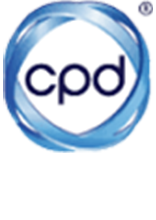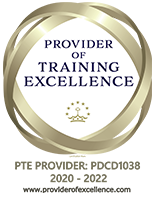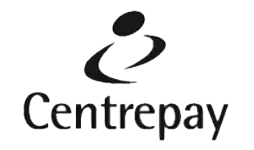When a pet is booked in for a procedure at the vet clinic, a step-by-step process follows to ensure the owners understand the procedure and what is involved; the case is allocated to a veterinarian to review and prepare, and the patient is ready. The veterinary nursing team mainly drives the entire process.
In this blog, we will go through the steps involved, the expectations from the nursing team and some tips for managing anaesthetics under the guidance/direction of the veterinary surgeon. Hopefully, this can shed some light on one of the primary roles of a veterinary nurse in a clinical setting.
It is important to note that because every vet clinic and hospital operates differently, the roles/expectations of nurses will vary from clinic to clinic.
#1 – Admitting the Patient and Client Communication
When an owner brings their pet in for a procedure in the morning, the first point of contact will be with the veterinary nursing team. If the client has booked in a standard procedure, e.g. desexing, they likely will not have discussed the procedure in depth with a veterinarian yet. Whereas, if they bring their pet in for a procedure after consulting with a veterinarian, hopefully, the procedure will have already been communicated.
Either way, at this time, it is important for the nurse to discuss the procedure (sedation/anaesthetic), to check if the owner has any questions, if the patient has fasted, if they’re on any medications, check their weight if coming in for desexing – check for testicles [male dog], check for retained baby teeth, check for microchipping status, check that the patient is otherwise healthy, check if they want IV fluids or a pre-anaesthetic blood test. It is also essential for the nurse to communicate the estimate and ensure the owner has approved the amount. Once this checklist has been completed, the clients sign an admit form, although some clinics have now transitioned to online admission forms.
The Vet Nurse will then advise the surgery nurse team that the patient has been admitted and communicate which procedure is being done/expected. The nurse may also advise if the patient is anxious or calm. This will help determine if the patient’s procedure should be done sooner than others or if the patient should be given medications to help with the anxiety.
#2 – Prepare the Patient and Liaise with the Veterinarian
Now that the patient has been admitted for the procedure, the nurse will now decide when the procedure will take place and assign the procedure to a veterinarian. If a pre-anaesthetic blood test is required, usually the nurse will collect this and run the test. Subsequently, the veterinarian will review the results to ensure it is appropriate to proceed with the surgery.
Premedications: For just about every surgery under anaesthesia, the patient will be given medications beforehand for (a) sedative/calming effect and (b) pain relief – most commonly used opioids. The nurse will liaise with the veterinarian about which premedications they want to use and prepare the doses. As some of these medications work faster than others, the timing of these medications is essential. Once the veterinarian has examined the patient, the veterinarian will give the premedication with the nurse assisting. This is where patient handling is important – getting a good hold of the patient to restrain them enough to allow the premedication to be given – usually intramuscular (e.g. back leg or back) or subcutaneously (under the skin). In some clinics, veterinarians will ask the nurse to administer these premedications.
Once this medication is given, the nurse will monitor the patient to ensure they respond appropriately to the medications. Depending on which drugs were used, they can take anywhere from 3-20 mins to take effect.

#3 – Prepare for surgery: Anaesthetic machine, IV cannula, table and kits
While waiting for the patient to be ready, it is during this time that the nurse will prepare the surgery theatre/table, surgery kits and anaesthetic machine. The nature of the procedure will determine which surgical theatre is used (i.e. if orthopaedic surgery – the main sterile theatre) and which surgery kits are required.
The next step is to check the anaesthetic machine. The patient's size will determine whether a rebreathing or non-rebreathing circuit is required – this will need to be adjusted accordingly. The nurse will also ensure adequate oxygen and anaesthetic (e.g. Isoflurane) levels. The nurse will also check that the monitoring tools are ready – pulse oximeter (checks oxygen levels of the patient), capnograph (checks carbon dioxide levels), blood pressure, and respiration counter (See photos attached of one of our anaesthetic machine setups). Ultimately, it is the responsibility of the veterinarian to ensure that the machine is working appropriately. Still, the nurse will liaise with the veterinarian if there are any concerns or questions.
Once everything is ready to go, and the patient’s medication has taken effect, an IV cannula will be placed if the procedure is surgery under anaesthetic. The veterinarian will put these in some clinics, with the nurse holding the patient. But in many clinics, the nurses will take on this role.

#4 – Intubation and Surgery Time!
Induction and intubation: Whilst most clinics will leave this part to the veterinarian, the nurse will handle the patient. Once the anaesthetic agent is given through the IV cannula, the patient becomes anaesthetised quickly. The next step involves intubating (placing the breathing tube in the trachea, i.e. ET tube) – as you will see, this is occurring in the video.
Now, the nurse and veterinarian will work together to connect the patient to all appropriate monitoring tools, ensure they are in a good depth of anaesthesia and ensure the patient is stable. Once stable, the nurse will begin preparing the skin or area for surgery, as the veterinarian directs.
Even though the veterinarian oversees the anaesthetic and patient, the nurse is effectively “running the show”. Throughout the course of the procedure, the veterinarian and nurse will communicate to ensure the patient is stable. The nurse will be required to:
- Monitor depth, which includes eye position, jaw tone, and palpebral reflex – see images.
- Monitor respiratory rate and heart rate (using a machine and manual – stethoscope).
- Monitor oxygen saturation (machine and checking gum colour), capillary refill time and monitor blood pressure.
- Adjust gaseous anaesthetic levels +/- oxygen as appropriate.
- Give injectable medications as directed by the veterinarian.
- Adjust the position of the patient as appropriate.
- Open surgical tools via sterile techniques.




#5 – Recovery and Discharge
Once the procedure is finished, it is time to wake up the patient. The recovery time can vary depending on patient signalment (age, breed) and the duration of the procedure the medications used. Generally, nurses will be given the role of recovery and extubation (removing the ET tube) when the patient is conscious enough. Once recovered, the nurse will periodically check on the patient to ensure they have recovered as expected.
The veterinarian will organise the discharge notes, history, and medications and communicate with the owner about the procedure, plan and aftercare.
When the owners come to pick up their pets, the nurse will remove the IV cannula from the patient. For most standard procedures, the nurse will hand over the patient, including the discharge notes and medications. The nurse will then run through some post-operative notes - what to feed that night, when to start the drugs, and whether a revisit is required, e.g. skin suture removal.
Want to Be a Better Dog Care Giver? Then add to your learning with an online course.
Dr Mark J Tenenbaum
OCA MENTOR & VETERINARIAN
Founder of The Vet Society


Online Courses Australia is a short course, CPD Endorsed training that covers more than 20 professional areas; call us today at 1300 611 404 or email our friendly team at [email protected], and we'll be happy to talk you through some of your Animal Health and Vet course options.
Read More





















